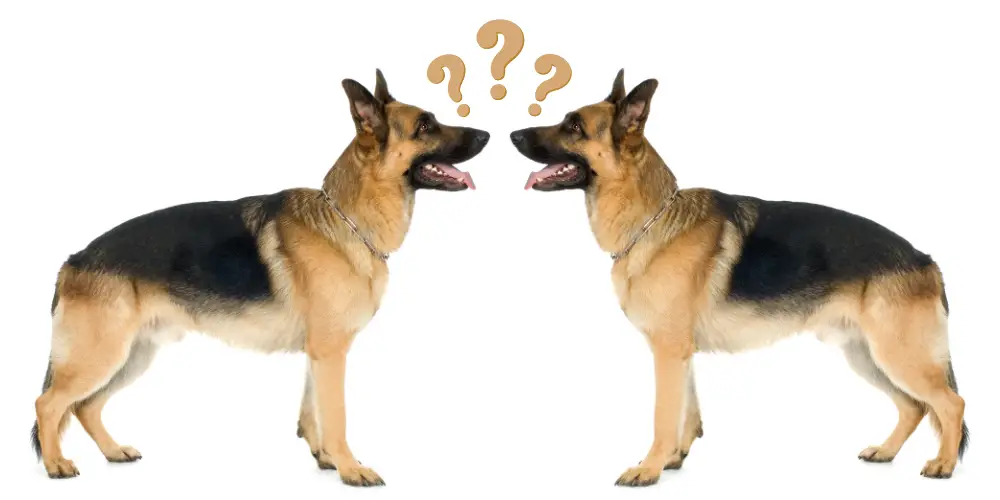German Shepherds are one of the most popular and recognizable dog breeds worldwide.
Their intelligence, loyalty, and versatility make them a favorite choice for dog lovers.
However, several other breeds share similar physical characteristics and temperaments with German Shepherds.
This article will explore these breeds, providing a comprehensive guide for those interested in dogs that look like German Shepherds.
The German Shepherd Breed
Physical Characteristics
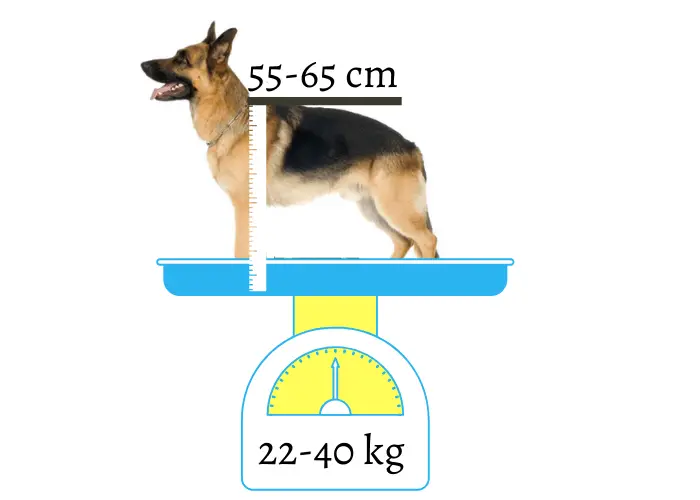
German Shepherds are large, strong dogs known for their distinctive appearance.
They typically weigh between 20 and 40 kg and stand about 55 to 65 cm tall at the shoulder.
Their bodies are longer than they are tall, and they have a sturdy, muscular build contributing to their agility and strength.
One of the most recognizable features of a German Shepherd is its beautiful, dense double coat, which comes in various colors, including black and tan, sable, and all-black.
Their ears are large, they stand erect, and they have intelligent, expressive eyes.
Temperament
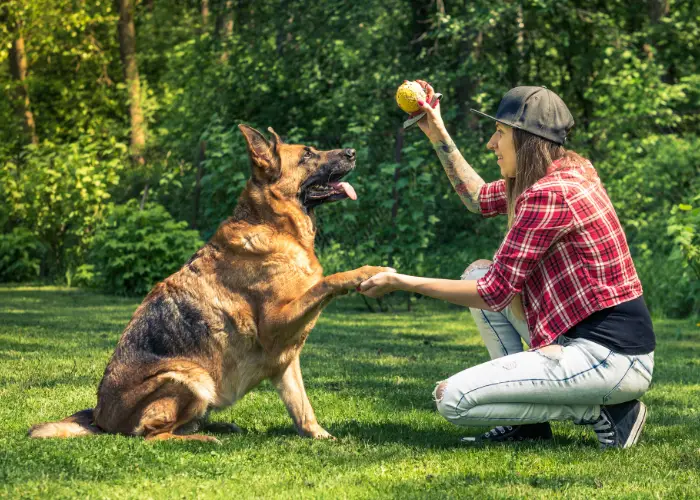
German Shepherds are known for their intelligence, loyalty, and versatility. They are quick learners, which makes them highly trainable.
They are often used in roles that require obedience, intelligence, and the ability to make independent decisions.
German Shepherds are also known for their protective nature, making them excellent family dogs and guardians.
Common Uses

Due to their intelligence and versatility, German Shepherds are often used in various working roles, including police work, search and rescue, and as service dogs.
They excel in activities challenging their minds and bodies, such as obedience trials, agility courses, and herding events.
Health and Care Needs
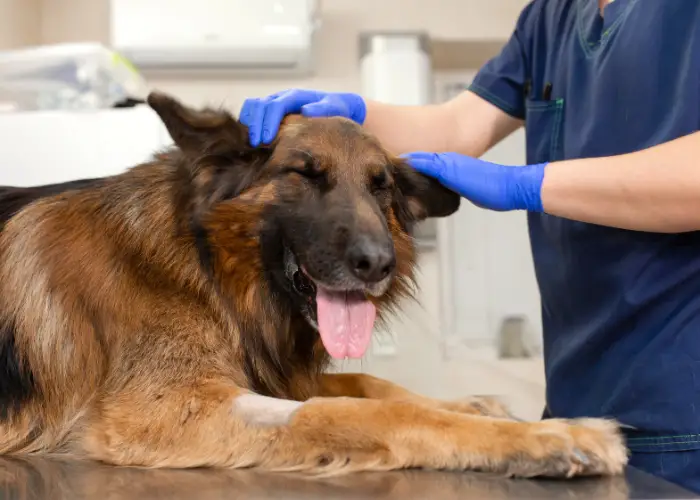
German Shepherds are generally healthy dogs, but like all breeds, they’re prone to certain health conditions.
German Shepherds’ most common health issues include hip and elbow dysplasia, degenerative myelopathy, and certain heart conditions. Regular check-ups with a vet and a healthy diet can help maintain their health.
Regarding care, German Shepherds require regular exercise to stimulate them physically and mentally.
They also need regular grooming due to their double coat, which sheds heavily twice a year.
Understanding the German Shepherd breed is crucial to recognizing the similarities and differences in the breeds we’ll explore next.
Each of these breeds shares some characteristics with German Shepherds, but they also have unique traits that set them apart.
Dogs That Look Like German Shepherds
Numerous breeds bear a resemblance to German Shepherds.
Each breed has unique traits but shares some physical characteristics and temperaments with German Shepherds. Let’s explore each of these breeds in detail.
1. Dutch Shepherd

Dutch Shepherds are medium-sized dogs that were originally bred for herding sheep.
They have a similar body structure to German Shepherds, with a muscular build, erect ears, and a dense coat.
Dutch Shepherds are known for their intelligence, loyalty, and versatility. They excel in various roles, including police work, search and rescue, and agility training.
2. Belgian Tervuren
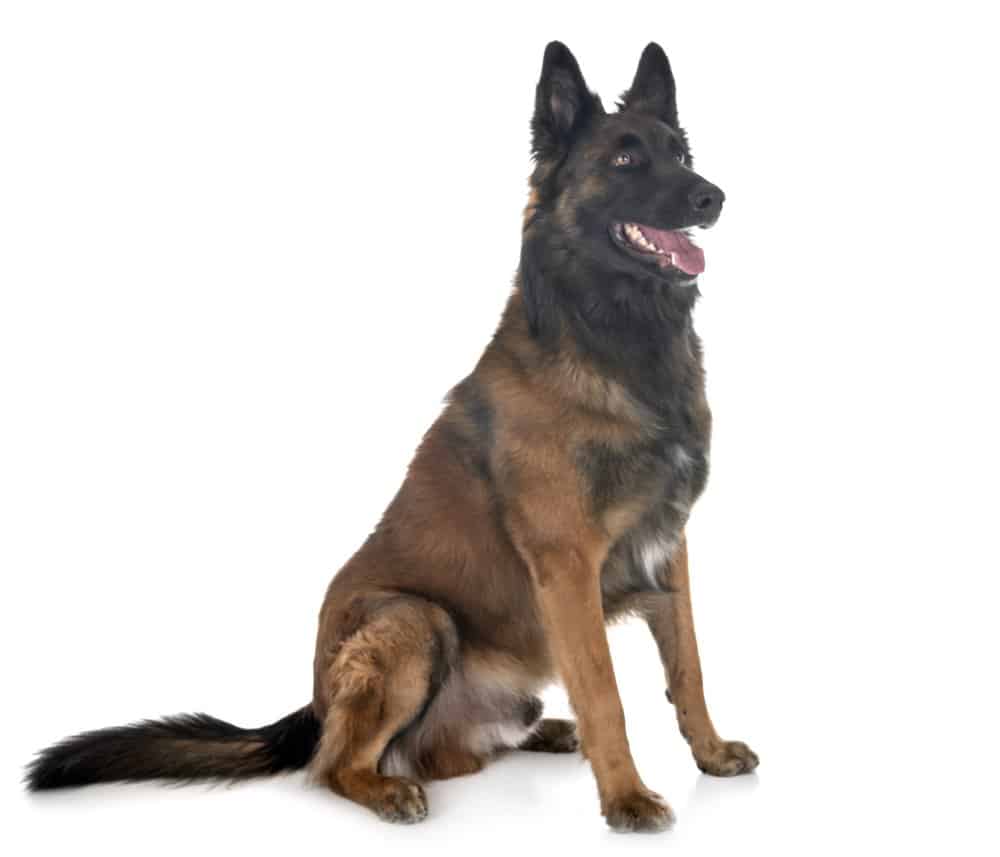
The Belgian Tervuren is one of the four varieties of the Belgian Shepherd.
They are similar in size and build to German Shepherds, with a thick double coat, erect ears, and an intelligent, alert expression.
Belgian Tervurens are known for their intelligence, energy, and protective nature. They require plenty of mental and physical stimulation to stay happy and healthy.
3. Shiloh Shepherd

Shiloh Shepherds are a relatively new breed developed to resemble the German Shepherds of old, with a calmer temperament and fewer health issues.
They are larger and have a more laid-back personality than most German Shepherds, but they share the same intelligence, loyalty, and versatility.
4. White Swiss Shepherd
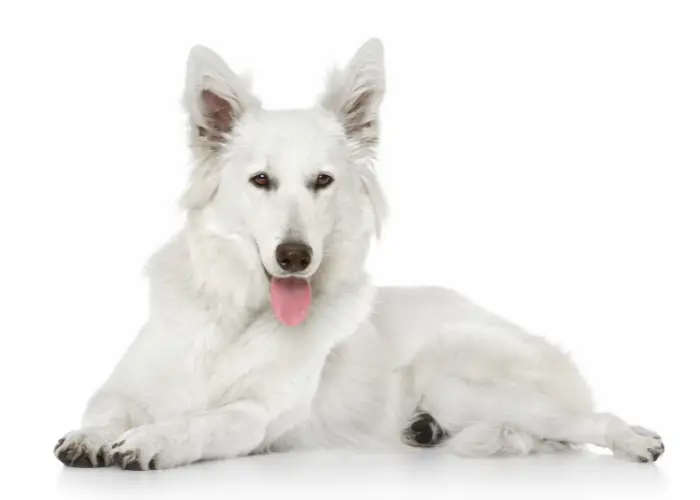
The White Swiss Shepherd, also known as the Berger Blanc Suisse, is a breed that closely resembles the German Shepherd, except for its white coat.
They share the same body structure, intelligence, and versatility as German Shepherds. White Swiss Shepherds are known for their friendly and gentle nature, making them excellent family pets.
5. King Shepherd
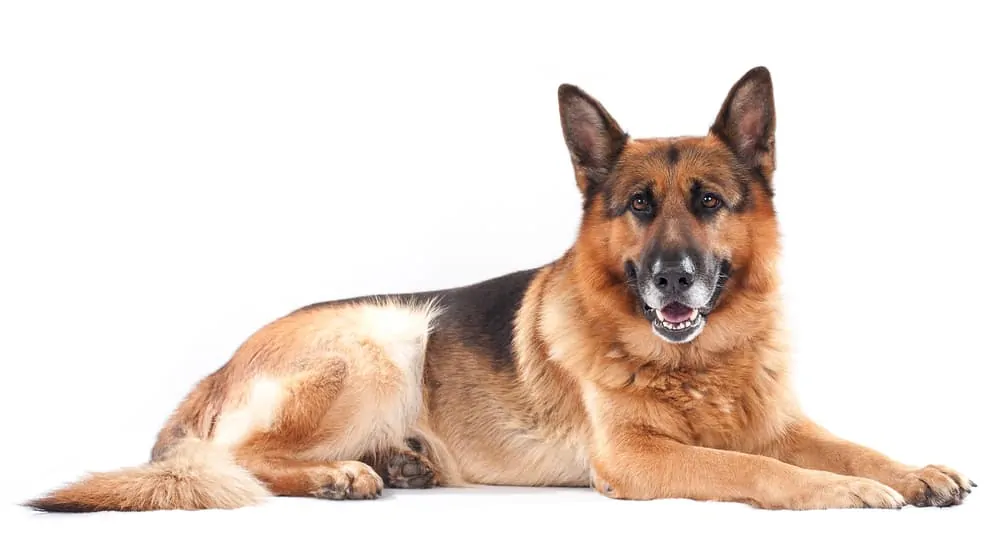
The King Shepherd is a large breed developed by breeding German Shepherds with Shiloh Shepherds and other breeds.
They are larger and heavier than most German Shepherds but share the same intelligence, loyalty, and protective nature.
King Shepherds are known for their calm and gentle temperament, making them excellent family pets.
6. White Shepherd
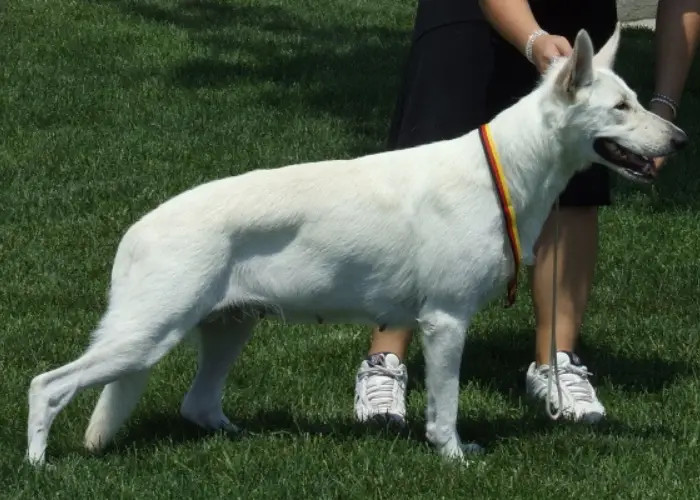
The White Shepherd is a variety of the German Shepherd breed recognized as a separate breed in some clubs.
They share the same physical characteristics, intelligence, and versatility as German Shepherds, but they have a pure white coat.
White Shepherds are known for their friendly and gentle nature, making them excellent family pets.
7. Saarloos Wolfdog
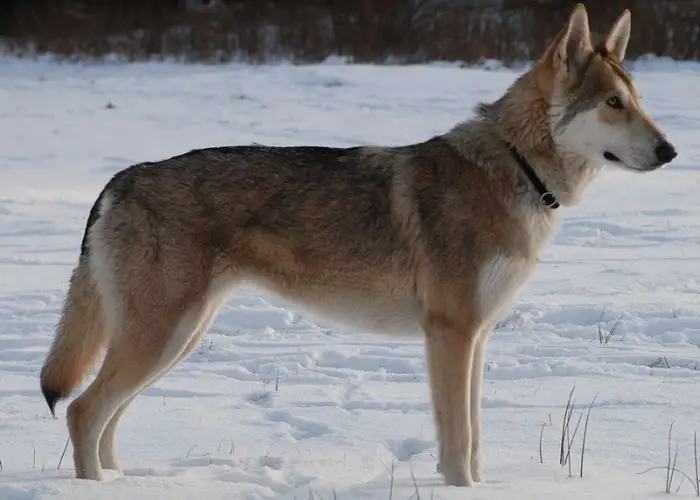
The Saarloos Wolfdog is a large breed developed by breeding a German Shepherd with a Eurasian Grey Wolf.
They have a body structure similar to German Shepherds but a more wolf-like appearance. Saarloos Wolfdogs are known for their intelligence, independence, and strong pack instinct.
They require an experienced owner who can provide plenty of mental and physical stimulation.
8. Bohemian Shepherd
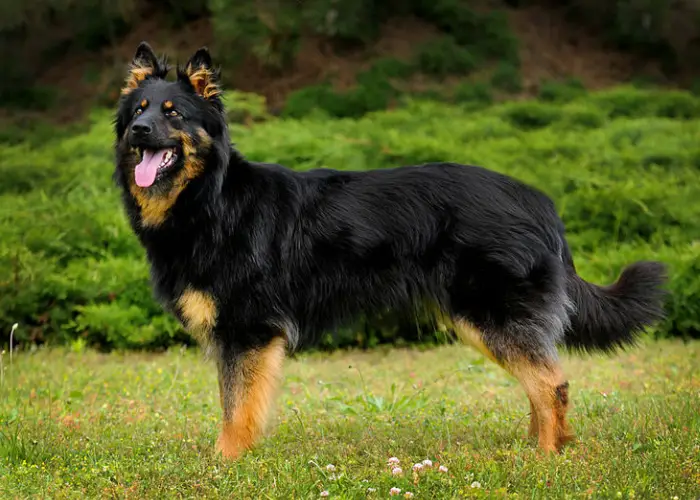
The Bohemian Shepherd, also known as the Chodsky Pes, is a medium-sized breed that closely resembles the German Shepherd.
They have a similar body structure: muscular build, erect ears, and dense coat. Bohemian Shepherds are known for their intelligence, agility, and friendly nature.
They excel in various roles, including agility training, search and rescue, and as service dogs.
9. Belgian Malinois
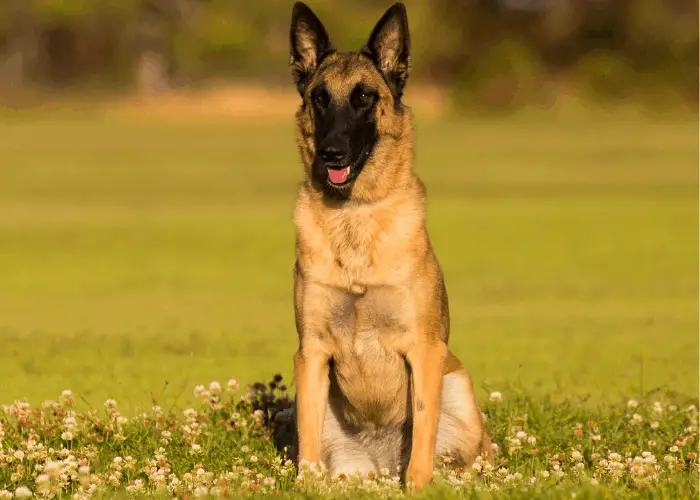
The Belgian Malinois is one of the four varieties of the Belgian Shepherd.
They are similar in size and build to German Shepherds, with short coats, erect ears, and an intelligent, alert expression.
Belgian Malinois are known for their high energy, intelligence, and protective nature. They are often used in police and military roles due to their trainability and work ethic.
10. Tamaskan
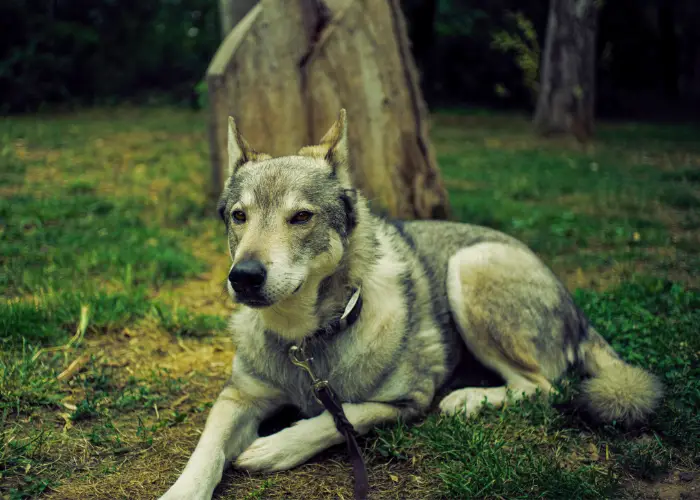
The Tamaskan is a large breed that was developed to resemble a wolf while maintaining the temperament of a working dog breed.
They have a similar body structure to German Shepherds, with a muscular build, erect ears, and a dense coat. Tamaskans are known for their intelligence, versatility, and friendly nature.
They excel in various roles, including search and rescue, sled pulling, and agility training.
11. Alaskan Malamute
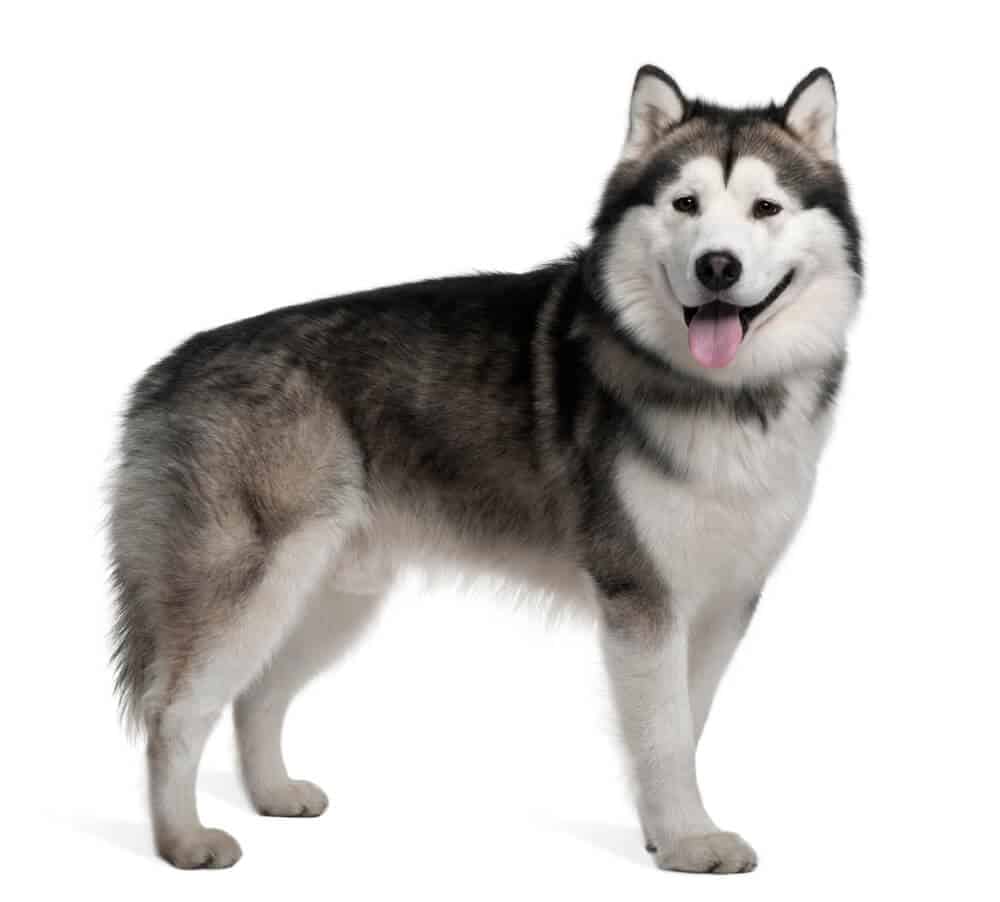
The Alaskan Malamute is a large breed known for its strength and endurance. While they have a distinct appearance with a broad head and plume tail, their size, erect ears, and double coat can be reminiscent of a German Shepherd.
Malamutes are known for their friendly and affectionate nature, as well as their intelligence and independence.
12. Utonogan
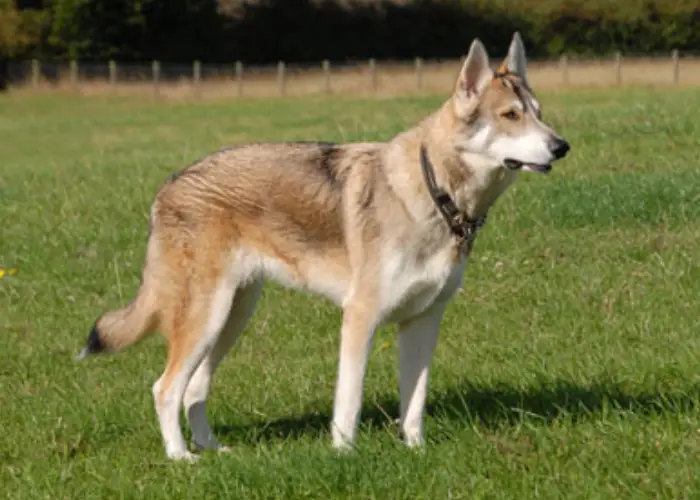
The Utonogan is a breed that was developed to look like a wolf while maintaining the temperament of a domestic dog.
They have a similar body structure to German Shepherds, with a muscular build, erect ears, and a dense coat.
Utonogans are known for their intelligence, friendly nature, and versatility. They make excellent family pets and can excel in various canine sports.
13. Carpathian Shepherd Dog
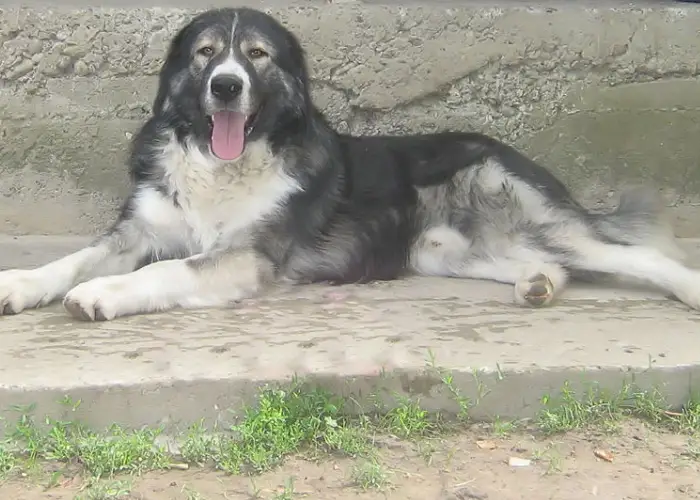
The Carpathian Shepherd Dog is a large breed originally bred for guarding livestock.
They have a similar body structure to German Shepherds, with a muscular build, erect ears, and a dense coat.
Carpathian Shepherds are known for their intelligence, independence, and protective nature. They require an experienced owner who can provide plenty of mental and physical stimulation.
14. Caucasian Shepherd

The Caucasian Shepherd is a large breed known for its strength and protective nature.
While they have a distinct appearance with a massive body and bear-like head, their size, erect ears, and double coat can be reminiscent of a German Shepherd.
Caucasian Shepherds are known for their loyalty, courage, and strong guarding instincts.
15. Byelorussian Shepherd
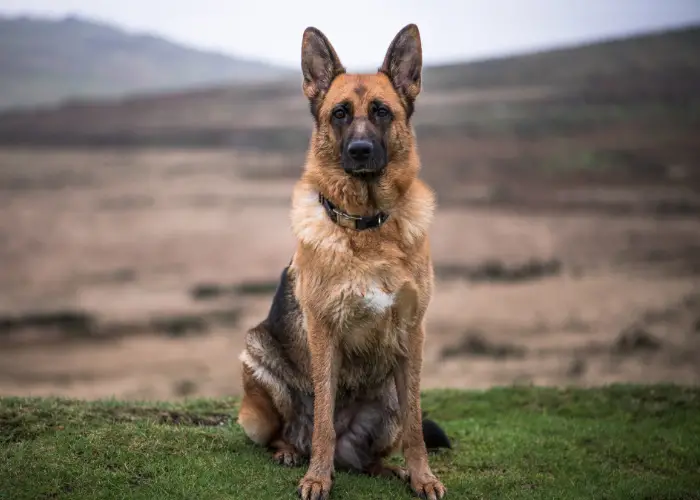
The Byelorussian Shepherd, also known as the East-European Shepherd, is a breed that closely resembles the German Shepherd.
They share the same body structure, intelligence, and versatility as German Shepherds.
Byelorussian Shepherds are known for their endurance, adaptability to harsh climates, and ability to work in various roles, including search and rescue and as service dogs.
16. Laekenois
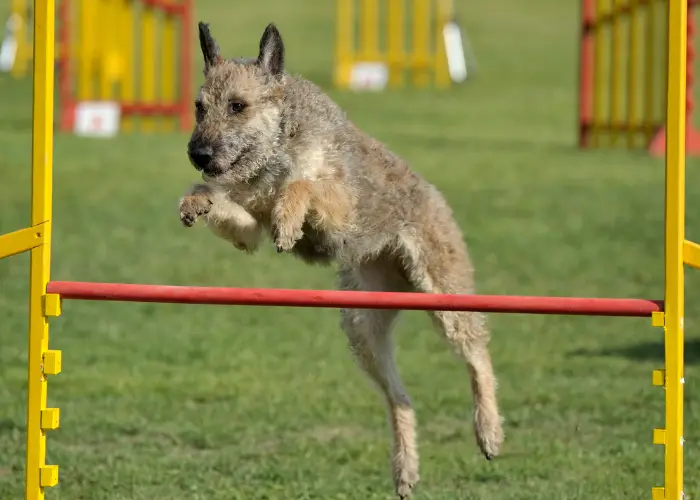
The Laekenois is one of the four varieties of the Belgian Shepherd. They are similar in size and build to German Shepherds but have rough, wiry coats.
Laekenois are known for their intelligence, alertness, and protective nature. They require plenty of mental and physical stimulation to stay happy and healthy.
17. Groenendael
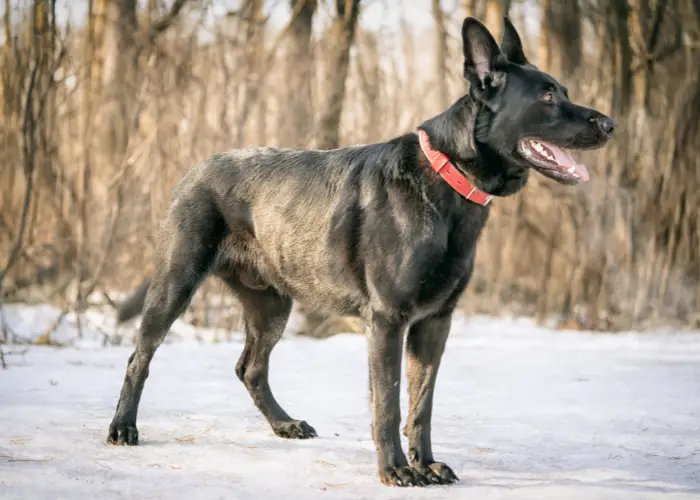
The Groenendael is one of the four varieties of the Belgian Shepherd. They are similar in size and build to German Shepherds, with a long, black coat, erect ears, and an intelligent, alert expression.
Groenendaels are known for their intelligence, energy, and protective nature. They require plenty of mental and physical stimulation to stay happy and healthy.
18. Miniature German Shepherd
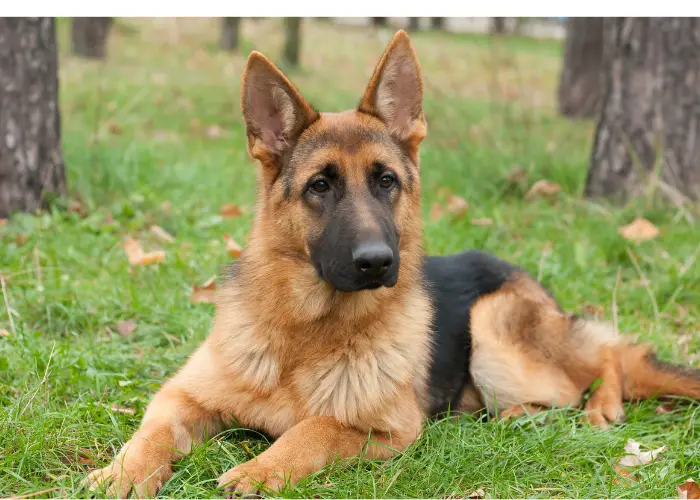
The Miniature German Shepherd is a smaller version of the German Shepherd.
They share the same physical characteristics, intelligence, and versatility as German Shepherds but are smaller.
Miniature German Shepherds are known for their friendly and gentle nature, making them excellent family pets.
19. Northern Inuit Dog

The Northern Inuit Dog is a breed that was developed to resemble a wolf while maintaining the temperament of a domestic dog.
They have a similar body structure to German Shepherds, with a muscular build, erect ears, and a dense coat.
Northern Inuit Dogs are known for their intelligence, friendly nature, and versatility. They make excellent family pets and can excel in various canine sports.
20. American Alsatian

The American Alsatian is a large breed that was developed to resemble the Dire Wolf in appearance.
They have a similar body structure to German Shepherds, with a muscular build, erect ears, and a dense coat.
American Alsatians are known for their calm and gentle temperament, making them excellent family pets.
21. East European Shepherd

The East European Shepherd is a breed that closely resembles the German Shepherd.
They share the same body structure, intelligence, and versatility as German Shepherds.
Eastern European Shepherds are known for their endurance, adaptability to harsh climates, and ability to work in various roles, including search and rescue and as service dogs.
Each of these breeds shares some characteristics with German Shepherds, but they also have unique traits that set them apart.
In the next section, we will provide a detailed comparison of each breed with German Shepherds.
Detailed Comparison of Each Breed with German Shepherds
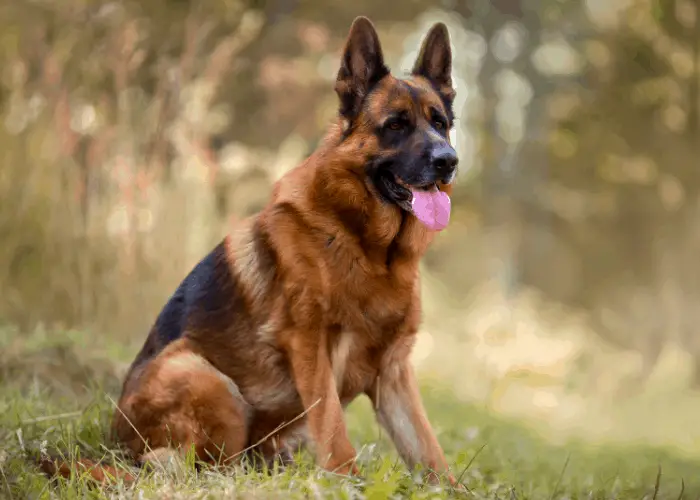
This section will delve into a detailed comparison of each breed with the German Shepherd.
We will explore their physical characteristics, temperament, potential health issues, and care needs.
| No. | Breed | Size | Coat | Temperament | Origin | Similarities to German Shepherds |
|---|---|---|---|---|---|---|
| 1 | Dutch Shepherd | Medium | Short to Long, Brindle | Active, Intelligent | Netherlands | Size, Structure, Active, Intelligent, Protective, Loyal, Commonly used in law enforcement and military work |
| 2 | Belgian Tervuren | Medium to Large | Long, Thick | Active, Intelligent | Belgium | Size, Structure, Coat, Active, Intelligent, Protective, Loyal, Part of the Belgian Shepherd family, used for herding and police work |
| 3 | Shiloh Shepherd | Large | Long, Thick | Calm, Gentle | USA | Size, Structure, Coat, Protective, Loyal, Good with families, Bred as a large, gentle, and intelligent dog for use as a companion and working dog |
| 4 | White Swiss Shepherd | Medium to Large | Long, Thick | Friendly, Intelligent | Switzerland | Size, Structure, Coat, Intelligent, Sociable, Good with families |
| 5 | King Shepherd | Large | Long, Thick | Calm, Gentle | USA | Size, Structure, Coat, Protective, Loyal, Good with families |
| 6 | White Shepherd | Medium to Large | Long, Thick | Friendly, Intelligent | USA | Size, Structure, Coat, Intelligent, Sociable, Good with families |
| 7 | Saarloos Wolfdog | Large | Short to Medium | Reserved, Loyal | Netherlands | Size, Structure, Coat, Loyal, Bred to be a wolf-dog hybrid |
| 8 | Bohemian Shepherd | Medium | Long, Thick | Active, Intelligent | Czech Republic | Size, Structure, Coat, Active, Intelligent, Protective, Loyal, Bred for herding and as a working dog |
| 9 | Belgian Malinois | Medium to Large | Short | Active, Intelligent | Belgium | Size, Structure, Active, Intelligent, Protective, Loyal, Commonly used as police and military dogs |
| 10 | Tamaskan | Large | Medium, Thick | Friendly, Intelligent | Finland | Size, Structure, Coat, Intelligent, Sociable, Good with families |
| 11 | Alaskan Malamute | Large | Long, Thick | Friendly, Active | USA | Size, Structure, Active, Sociable, Good with families, Used for sled-pulling and as a working dog in cold climates |
| 12 | Utonagan | Large | Medium, Thick | Friendly, Intelligent | UK | Size, Structure, Coat, Intelligent, Sociable, Good with families |
| 13 | Carpathian Shepherd Dog | Large | Long, Thick | Protective, Vigilant | Romania | Size, Structure, Protective, Loyal, Used as working dogs |
| 14 | Caucasian Shepherd | Very Large | Long, Thick | Protective, Vigilant | Caucasus Region | Size, Structure, Protective, Loyal, Used as working dogs |
| 15 | Byelorussian Shepherd (East European Shepherd) | Large | Short to Medium | Active, Intelligent | Former Soviet Union | Size, Structure, Coat, Active, Intelligent, Protective, Loyal, Used as working dogs |
| 16 | Laekenois | Medium | Short, Wire-haired | Active, Intelligent | Belgium | Size, Structure, Active, Intelligent, Protective, Loyal, Used as working dogs |
| 17 | Groenendael | Medium to Large | Long, Thick | Active, Intelligent | Belgium | Size, Structure, Coat, Active, Intelligent, Protective, Loyal, Used as working dogs |
| 18 | Miniature German Shepherd | Small to Medium | Short to Medium | Active, Intelligent | USA | Size, Structure, Coat, Active, Intelligent, Protective, Loyal, Used as working dogs |
| 19 | Northern Inuit Dog | Large | Medium, Thick | Friendly, Intelligent | UK | Size, Structure, Coat, Intelligent, Sociable, Good with families |
| 20 | American Alsatian | Large | Medium, Thick | Calm, Gentle | USA | Size, Structure, Coat, Protective, Loyal, Good with families |
| 21 | East European Shepherd | Large | Short to Medium | Active, Intelligent | Former Soviet Union | Size, Structure, Coat, Active, Intelligent, Protective, Loyal, Used as working dogs |
Each of these breeds shares some characteristics with German Shepherds, but they also have unique traits that set them apart.
Understanding these differences can help you choose the breed that best fits your lifestyle and preferences.
Choosing the Right Breed for You
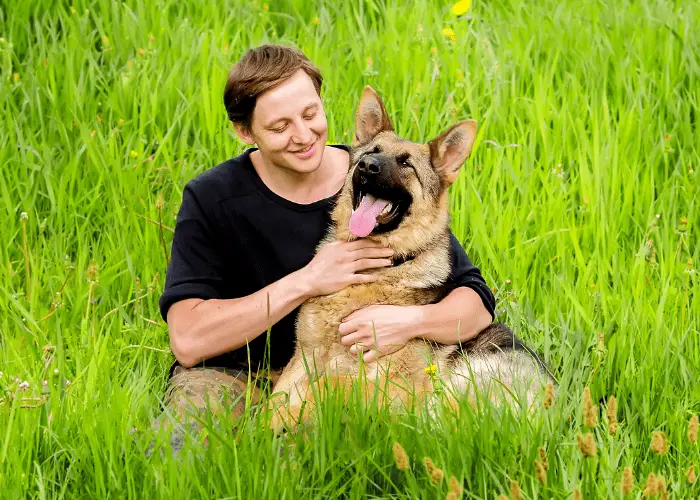
Choosing a dog breed is a significant decision that requires careful consideration.
While the breeds discussed in this article all resemble German Shepherds to some extent, they each have unique traits and care needs that should be considered.
Here are some factors to consider when choosing a dog breed:
- Lifestyle: Consider your lifestyle and how a dog would fit into it. Some breeds require more exercise and mental stimulation than others. A high-energy breed might be a good fit if you lead an active lifestyle. On the other hand, if you prefer a more relaxed lifestyle, a breed with lower energy levels might be more suitable.
- Living Situation: Your living situation is another important factor to consider. Some breeds do well in apartments, while others need a large yard to run around in. Also, consider whether the breed is known to be noisy, which could be a problem in close living situations.
- Experience: Some breeds are more suitable for experienced dog owners, while others are good for first-time owners. Breeds known to be stubborn or independent may require more experienced handling.
- Family: If you have children or other pets, you’ll want to choose a good breed with kids and/or other animals.
- Health Issues: Some breeds are prone to certain health issues. Research the common health problems of the breed you’re considering and ensure you’re prepared to handle them if necessary.
Conclusion
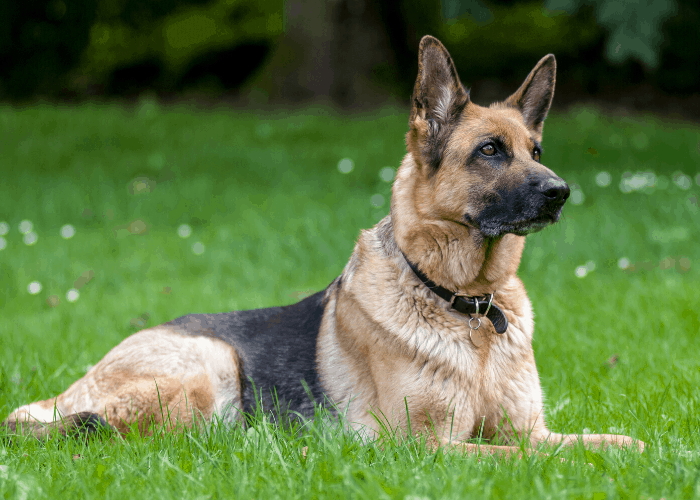
From the Belgian Malinois to the Utonagan, numerous breeds share a striking resemblance with the German Shepherd.
Each breed carries a part of the German Shepherd’s look or temperament, making them excellent alternatives for breed enthusiasts.
Whether you’re drawn to their look, temperament, or working ability, there’s likely a German Shepherd look-alike that fits the bill.
Remember, each breed has needs and characteristics, so research before bringing a new dog into your home.
For more information about German Shepherds, check out these articles: German Shepherd Pros and Cons and Male vs. Female German Shepherd.
If you found this article helpful, please share it with others who might be interested.
And if you have any experiences with these breeds or other breeds that look like German Shepherds, we’d love to hear from you.
Please leave a comment below and share your story.
Your insights could help others make the right choice when choosing their next furry friend.
READ MORE WEIRD ARTICLES BELOW:
FAQs
1. Why do police use Belgian Malinois instead of German Shepherd?
Police forces often prefer Belgian Malinois due to their smaller size, agility, and endurance.
They are also known for their intense drive and focus, making them excellent for police work where precision and obedience are key.
2. Why do Navy SEALs use Belgian Malinois?
Navy SEALs use Belgian Malinois for their exceptional intelligence, trainability, and versatility.
They are highly adaptable and can perform various tasks, from detection to protection, making them invaluable in high-stakes military operations.
3. Does the military use German Shepherds or Belgian Malinois?
Both German Shepherds and Belgian Malinois are used in the military.
German Shepherds are known for their intelligence and versatility, while Belgian Malinois are valued for their endurance and agility.
The choice between the two often depends on the mission’s specific requirements.
REFERENCES:
- German Shepherd. (2023, June 1). In Wikipedia. https://en.wikipedia.org/wiki/German_Shepherd
- Dutch Shepherd. (2023). In Wikipedia. https://en.wikipedia.org/wiki/Dutch_Shepherd
- Belgian Tervuren. (2023). In Wikipedia. https://en.wikipedia.org/wiki/Belgian_Tervuren
- Shiloh Shepherd. (2023). In Wikipedia. https://en.wikipedia.org/wiki/German_Shepherd#Shiloh_Shepherd
- White Swiss Shepherd. (2023). In Wikipedia. https://en.wikipedia.org/wiki/White_Swiss_Shepherd
- King Shepherd. (2023). In Wikipedia. https://en.wikipedia.org/wiki/German_Shepherd#King_Shepherd
- White Shepherd. (2023). In Wikipedia. https://en.wikipedia.org/wiki/White_Shepherd
- Saarloos Wolfdog. (2023). In Wikipedia. https://en.wikipedia.org/wiki/Saarloos_Wolfdog
- Bohemian Shepherd. (2023). In Wikipedia. https://en.wikipedia.org/wiki/Bohemian_Shepherd
- Belgian Malinois. (2023). In Wikipedia. https://en.wikipedia.org/wiki/Belgian_Malinois
- Tamaskan Dog. (2023). In Wikipedia. https://en.wikipedia.org/wiki/Tamaskan_Dog
- Alaskan Malamute. (2023). In Wikipedia. https://en.wikipedia.org/wiki/Alaskan_Malamute
- Utonagan. (2023). In Wikipedia. https://en.wikipedia.org/wiki/Utonagan
- Carpathian Shepherd Dog. (2023). In Wikipedia. https://en.wikipedia.org/wiki/Carpathian_Shepherd_Dog
- Caucasian Shepherd Dog. (2023). In Wikipedia. https://en.wikipedia.org/wiki/Caucasian_Shepherd_Dog
- Byelorussian Shepherd. (2023). In Wikipedia. https://en.wikipedia.org/wiki/Byelorussian_Shepherd
- Laekenois. (2023). In Wikipedia. https://en.wikipedia.org/wiki/Laekenois
- Groenendael dog. (2023). In Wikipedia. https://en.wikipedia.org/wiki/Groenendael_dog
- Miniature German Shepherd Breed Overview | Temperament & Personality. https://usserviceanimals.org/blog/miniature-german-shepherd-breed-overview/
- Northern Inuit Dog. (2023). In Wikipedia. https://en.wikipedia.org/wiki/Northern_Inuit_Dog
- Facebook. (n.d.). American Alsatian Lovers. https://www.facebook.com/groups/2086178941631841/
- East European Shepherd. (2023, January 27). In Wikipedia. https://en.wikipedia.org/wiki/East_European_Shepherd

